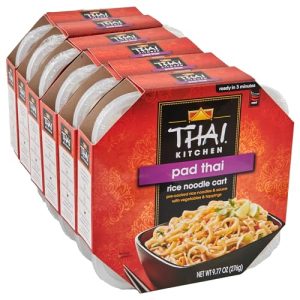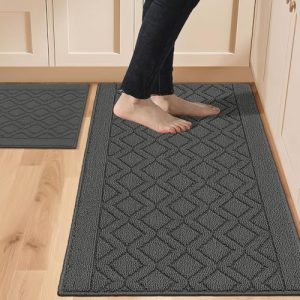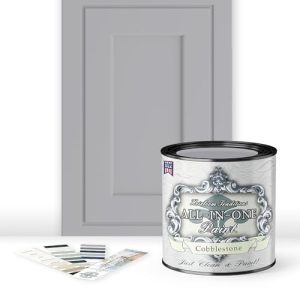Are you wondering if your pizza oven requires a Type I kitchen hood? You’re not alone.
Whether you run a busy pizzeria or have a pizza oven in your commercial kitchen, knowing the right ventilation setup is crucial. The right hood keeps your kitchen safe, meets health codes, and ensures smooth cooking. But how do you decide if a Type I hood is necessary for your pizza oven?
Keep reading to uncover what you need to know to protect your kitchen and boost your cooking efficiency.
Pizza Oven Types
Pizza ovens come in several types, each with unique features. Choosing the right oven affects cooking style and kitchen setup. Understanding these types helps decide if a Type I kitchen hood is necessary.
Wood-fired Ovens
Wood-fired ovens use burning wood to create intense heat. They reach very high temperatures quickly. This type produces a smoky flavor many pizza lovers prefer. The smoke and heat require strong ventilation. Wood ovens often need a Type I kitchen hood for safety.
Gas-powered Ovens
Gas-powered ovens run on natural gas or propane. They heat up fast and offer good temperature control. These ovens produce less smoke than wood-fired ones. Yet, they still release grease and vapors. A Type I hood usually helps keep the kitchen air clean.
Electric Ovens
Electric ovens use electric heating elements. They provide even heat and are easy to control. Electric ovens do not create smoke or grease. Usually, they do not need a Type I hood. A Type II hood or standard ventilation often works well.
Kitchen Hood Basics
Understanding the basics of kitchen hoods is essential, especially if you’re considering installing a pizza oven in your kitchen. Kitchen hoods play a crucial role in maintaining air quality by removing smoke, grease, and heat. Knowing the difference between the types of hoods helps you pick the right one for your cooking needs and space.
Type I Hood Features
Type I hoods are designed to handle smoke, grease, and heat produced by cooking appliances that use solid fuel, gas, or oil. They are commonly installed over fryers, grills, and pizza ovens. These hoods have powerful ventilation systems to capture and filter grease particles, preventing buildup on kitchen surfaces.
They usually come with a grease filtration system, often made from stainless steel baffles, which are easy to clean and highly effective. Type I hoods also need to be connected to a fire suppression system for safety. If your pizza oven produces a lot of smoke or grease, a Type I hood is typically required by health codes.
Type Ii Hood Features
Type II hoods are designed for appliances that produce only steam or heat, without grease or smoke. Examples include dishwashers, steamers, and some ovens that don’t generate grease-laden vapors. These hoods focus on removing heat and moisture, improving kitchen comfort and air circulation.
They have simpler filtration systems compared to Type I hoods, often just filters to trap moisture. Type II hoods do not require fire suppression systems since they handle less hazardous exhaust. If your pizza oven is electric and produces minimal smoke or grease, a Type II hood might be sufficient.
Regulations And Codes
Pizza ovens often require Type I kitchen hoods to handle smoke and grease. These hoods help keep kitchens safe and meet fire codes. Proper ventilation is essential for commercial pizza ovens to comply with health and safety rules.
When setting up a pizza oven in a commercial kitchen, understanding the regulations and codes is crucial. These rules ensure safety and compliance, but they can seem overwhelming. Whether you’re a seasoned restaurateur or a newbie, grasping these standards is essential for a smooth operation.Nfpa Standards
The National Fire Protection Association (NFPA) sets guidelines to prevent fire hazards in commercial kitchens. NFPA 96 is the standard for ventilation control and fire protection of commercial cooking operations. It mandates the use of Type I kitchen hoods for appliances that produce grease or smoke, like pizza ovens. Imagine the peace of mind knowing your restaurant complies with these standards. But remember, it’s not just about installing a hood; proper maintenance is key. Regular inspections can prevent unexpected fires and costly repairs.Local Health Codes
Local health departments have their own set of rules to ensure food safety and sanitation. These codes can vary significantly, so it’s essential to check with your local authority. Often, they require a Type I hood to maintain a clean and healthy cooking environment. You might think, “Is this really necessary?” Consider this: a compliant kitchen not only passes inspections but also builds trust with customers. A clean kitchen with proper ventilation enhances food quality and keeps your staff safe.Building Codes
Building codes address structural safety and fire prevention, ensuring the entire facility is secure. These codes may also require specific ventilation systems for pizza ovens. Understanding your building’s requirements can prevent costly renovations later on. Have you ever had to redo a project because you missed a crucial detail? Ensuring compliance with building codes from the start saves time and money. It also ensures your business can operate without interruptions or fines. Navigating these regulations might seem daunting, but they serve a purpose. They protect your business, employees, and customers. Are you prepared to meet these standards and create a safe, successful kitchen environment?When Type I Hoods Are Required
Knowing when a Type I kitchen hood is necessary for your pizza oven setup can save you time, money, and even safety issues. These hoods are not just a regulatory formality—they play a crucial role in managing heat, grease, smoke, and odors. Understanding the specific conditions that require a Type I hood will help you make informed decisions for your kitchen’s design and compliance.
High Heat And Grease Output
Pizza ovens often operate at very high temperatures, which can produce significant amounts of heat and grease-laden vapors. Type I hoods are designed to handle this intense heat and capture grease before it accumulates on surfaces or enters the ventilation system.
If your oven creates a lot of grease or operates at temperatures above normal cooking ranges, a Type I hood is typically required. Have you checked the grease output from your oven lately? It can be more than you expect.
Open Flame Usage
Many traditional pizza ovens use open flames, either from wood, gas, or charcoal. Open flames increase the risk of fire hazards and require specialized ventilation to ensure safety.
Type I hoods are built to safely vent the heat and flames, reducing the chances of fire spreading through the ductwork. If your oven uses any visible flame during cooking, installing a Type I hood is not just smart but often mandated by fire codes.
Smoke And Odor Considerations
Smoke and strong odors from pizza ovens can affect kitchen staff and dining areas. Type I hoods efficiently capture and filter out these byproducts, improving air quality.
Even if your oven doesn’t produce excessive grease, heavy smoke or pungent smells can still require a Type I hood to maintain a comfortable environment. Do you notice lingering smoke smells after cooking? That’s a clear sign your ventilation needs an upgrade.
Alternatives To Type I Hoods
Type I kitchen hoods are the standard for many commercial kitchens, but pizza ovens sometimes require different ventilation solutions. Alternatives to Type I hoods exist for spaces with specific needs or restrictions. These options can provide adequate airflow and safety without the bulk of traditional hoods.
Type Ii Hood Applications
Type II hoods handle heat and steam, not grease or smoke. They suit appliances like pizza ovens that produce less grease. These hoods are smaller and less costly than Type I. They help remove heat, steam, and odors effectively. Perfect for kitchens with lighter cooking loads.
Ventless Systems
Ventless systems use filters and air scrubbers to clean kitchen air. They capture grease, smoke, and odors inside the unit. These systems work well in locations where venting outside is difficult. They reduce installation costs and save space. Regular filter cleaning is essential for good performance.
Custom Ventilation Solutions
Custom ventilation fits unique kitchen layouts or special equipment. It combines fans, ducts, and hoods designed for specific needs. Experts assess cooking equipment and space to create the best setup. This approach ensures safety and efficiency without excess ventilation. Great for kitchens with unusual designs or restrictions.
Installation Tips
Installing a kitchen hood for your pizza oven isn’t just about following rules—it’s about making sure your kitchen stays safe, efficient, and comfortable. The right setup can prevent smoke buildup, reduce fire risks, and keep your cooking environment pleasant. Let’s break down some key tips to get your hood installation just right.
Proper Hood Sizing
Choosing the correct hood size is crucial. A hood that’s too small won’t capture smoke and grease effectively, while one that’s too large can waste energy and space.
Measure the width and depth of your pizza oven carefully. The hood should extend at least 6 inches beyond all sides of the oven to catch all fumes.
Remember, a larger hood also means your ventilation system needs to handle more air volume. Have you checked if your current exhaust fan matches the hood size?
Ventilation Placement
Where you place the ventilation makes a big difference in performance. Position the hood directly above the pizza oven to capture smoke at its source.
Keep in mind the ductwork should be as straight and short as possible to avoid airflow restrictions. Sharp bends can reduce efficiency and increase maintenance needs.
Think about how the hood vents outside—avoid areas near windows or air intakes to prevent smoke from re-entering your building.
Maintenance Needs
Regular cleaning and maintenance keep your hood working well and safe. Grease buildup can cause fires and reduce airflow, so set a cleaning schedule based on your oven’s usage.
Inspect filters, fans, and ducts every few months. Simple tasks like wiping surfaces or replacing filters can save you from costly repairs later.
Have you noticed how some kitchens neglect this step? Don’t let maintenance be an afterthought; it’s key to long-term performance and safety.
Cost Implications
Choosing the right kitchen hood for a pizza oven affects overall costs. Type I kitchen hoods come with specific expenses that impact your budget. Understanding these costs helps plan better and avoid surprises.
Initial Installation Costs
Installing a Type I kitchen hood involves several expenses. The hood itself can be costly due to its size and materials. Professional installation is required to meet safety codes. Ventilation ducts and fire suppression systems add to the price. Larger pizza ovens need bigger hoods, increasing costs further.
Long-term Maintenance
Maintenance keeps your hood working safely and efficiently. Regular cleaning prevents grease buildup, reducing fire risks. Repairs might be needed for filters and fans over time. Ignoring maintenance leads to costly damage. Budgeting for annual inspections and cleaning saves money in the long run.
Energy Efficiency
Type I hoods use powerful fans that consume energy. Energy-efficient models lower electricity bills. Choosing a hood with variable speed controls saves power during slow hours. Properly sealed ducts improve airflow and reduce waste. Investing in energy-efficient options cuts costs over time.
Frequently Asked Questions
Do Pizza Ovens Require Type I Kitchen Hoods?
Yes, pizza ovens producing grease, smoke, or heat typically need Type I kitchen hoods. These hoods ensure proper ventilation and fire safety in commercial kitchens.
What Is A Type I Kitchen Hood?
A Type I kitchen hood is a ventilation system designed to remove grease, smoke, and heat from cooking appliances, including pizza ovens, to maintain air quality and comply with safety codes.
Can Pizza Ovens Use Type Ii Kitchen Hoods Instead?
No, Type II hoods are for non-grease cooking appliances. Pizza ovens producing grease and smoke require Type I hoods for proper ventilation and fire protection.
Are Type I Hoods Mandatory For All Pizza Ovens?
Not all pizza ovens require Type I hoods. Only those emitting grease, smoke, or high heat must have them, based on local fire and building codes.
Conclusion
Pizza ovens often produce smoke and grease that need proper ventilation. Type I kitchen hoods help remove these byproducts safely. They protect your kitchen from fire hazards and keep the air clean. Not every pizza oven requires a Type I hood, but many do for safety rules.
Checking local codes is important before installing any hood. Choosing the right hood keeps your kitchen safe and fresh. Proper ventilation also helps your pizza taste better by controlling smoke. A well-ventilated kitchen works smoothly and stays comfortable.

Sophie Hartwell is the founder of KitchenQuik.com, where she shares kitchen tips, smart cooking hacks, and the best product picks to make everyday cooking easier and more enjoyable.




